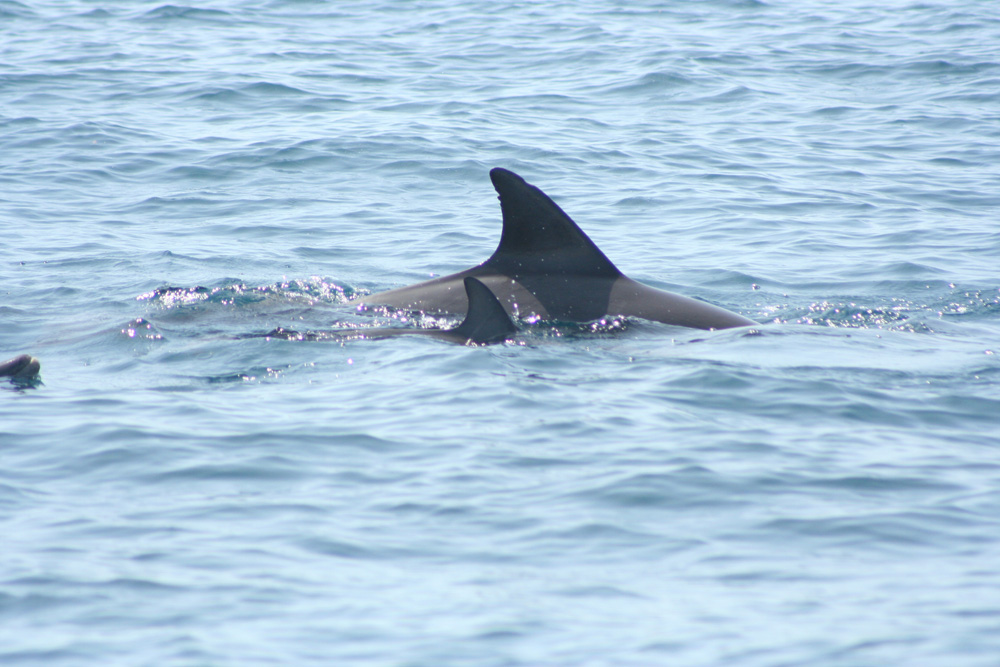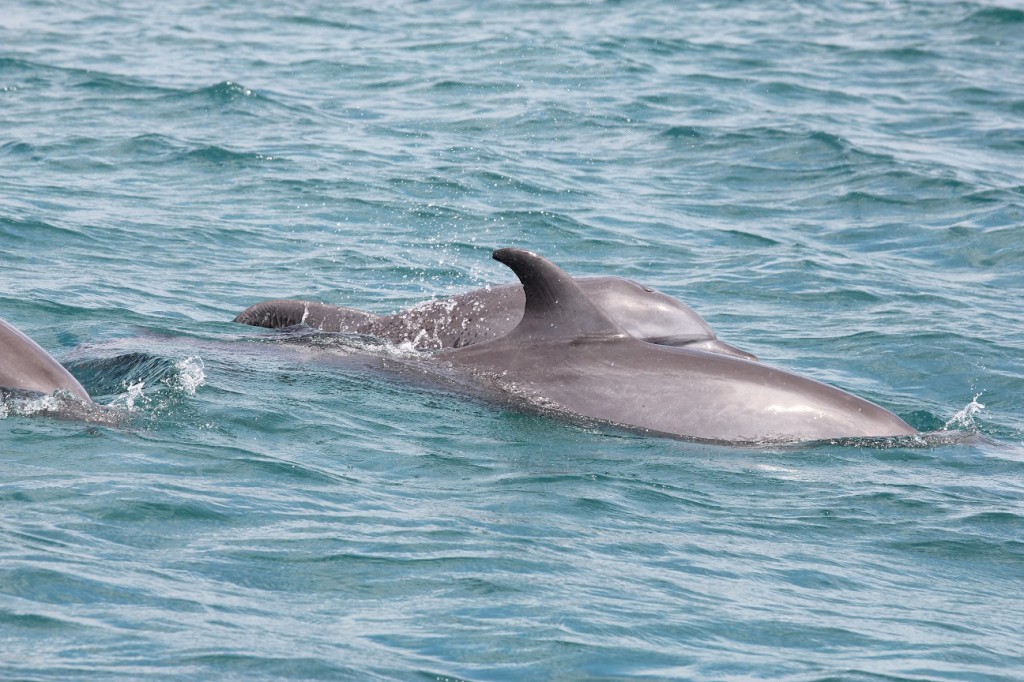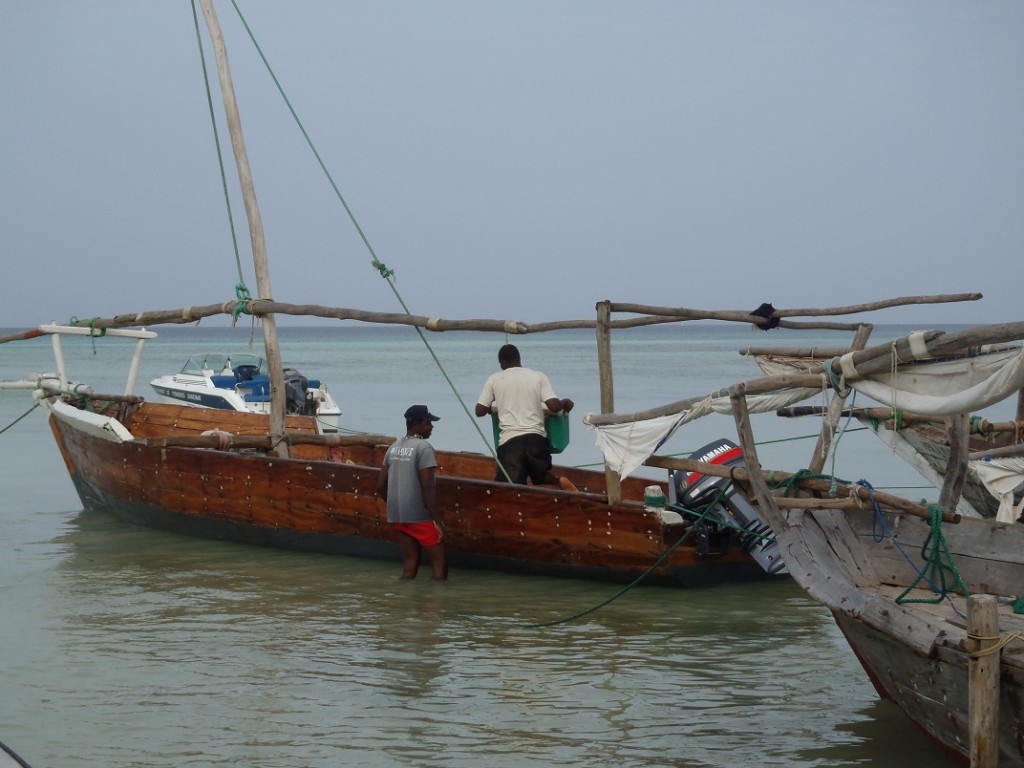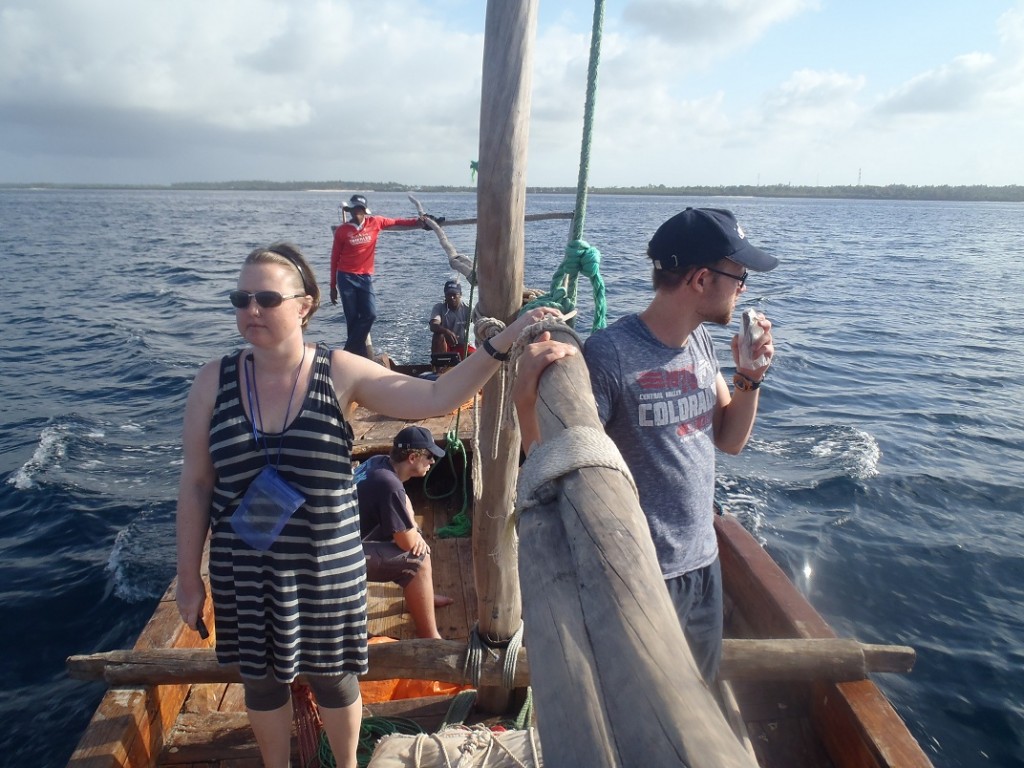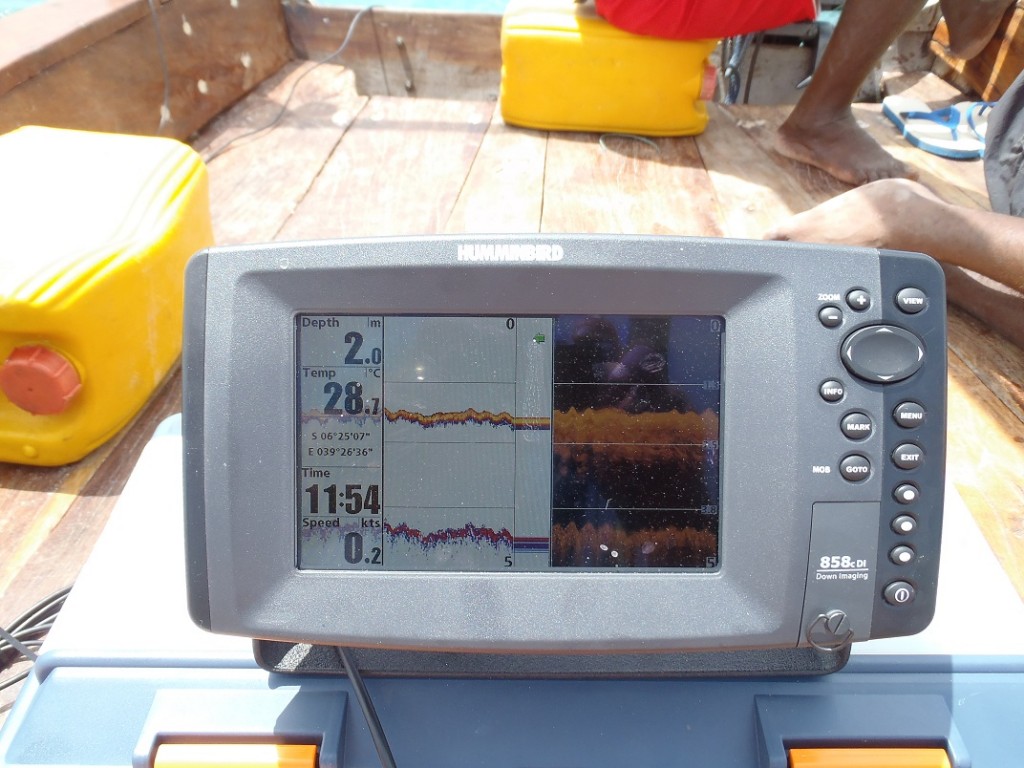“After a rather barren week one it appears the dolphins have had enough of our game of hide and seek (obviously we aren’t up to their standards at that game! Hiding behind the curtains, who’d have thought?!).”
So, our transects are finalised, our provisions are ready and it’s time to really begin.
We began our research proper on Sunday and managed to get 13 transects done between then and now (Wednesday), along with a supplies trip to Stone Town. Our transects take us from the western shores of Unguja Island to the very edge of the Menai Bay Conservation Area and so vary between 5-10 nautical miles, or 5¾ – 11½ kilometres for us younger ones, travelling at 7.5knots that can feel like a lot of staring at empty water when the animals aren’t playing ball! Luckily they have been good to us this week, with sightings every day since.
Our sighting on Sunday was an unexpected one as three dark shadows snuck in from behind the boat and popped up just five meters from the port side; they took me completely by surprise, spinners. We spend all day looking for Indo-Pacific bottlenose and humpback dolphins and the first species we see is one we thought we would be lucky to see even once during our 12 weeks here! But just like they arrived the three of them ghosted away after only a few seconds, short but sweet, I won’t forget my first ever spinner dolphin sighting.
From then our days kept getting better. Monday graced us with two different sightings; a solitary bottlenose offshore near Pungume Island, and a single humpback dolphin within 100m of shore just north of Kizimkazi-Dimbani, another first for me.
Tuesday’s sightings capped off the week, though they also served as a reminder of one of the worse sides of dolphin tourism. Our first transect of the day encountered five tourist boats a little offshore moving at breakneck speeds, this was the only clue we needed to know what was coming next. In their midst two bottlenose dolphins – a mother and her calf. The boats surrounded the animals and dumped their payload of snorkel equipped tourists practically on their heads, when you can see the splashes of the tourists hitting the water from 200m imagine what that must look like hitting the water 5m in front of you. Sad, but unfortunately this is what can happen with largely unregulated dolphin tourism activities, the guidelines go ignored. Slightly further along this transect we also bumped into another pair of bottlenose, luckily they had escaped the tourist boats attentions this time and were cruising down to Usine, one of the major hotspots for these animals here in Menai Bay. Our last sighting of the week was definitely our best so far; we found a group of 8 animals resting over an offshore reef out in the middle of the bay, with them a calf and one small, ungainly and awkwardly surfacing animal. Don’t worry that’s a good thing; it was a YOY (Young Of the Year). Between the two of them it is a great sign that the population is breeding well.
Well that brings us to Wednesday and the end of our week, but most specifically Stone Town and the Dala Dala. I can safely say, and Will’s 6’4” frame will attest to this, it’s possibly the most uncomfortable form of transport ever!!! Think 20 people and their luggage packed into the back of a milk truck for an hour and a half, now take about a foot off the headroom, cosy doesn’t quite cover it! At least Stone Town was worth it, the hustle of the city, the market and a stunning roof-top view as the back drop for lunch, not too shoddy if you ask me. Oh, and we also got to visit Omar Amir, one of Per’s old PhD students, an old friend of Stina and someone who’s work I had spent some time digesting before this trip began, who now resides at the Ministry of Livestock and Fisheries.
Well that was week two in a nutshell, a good one for us and I hope it was a good one for all of you! See you next time.
Andrew Temple
Newcastle University
Zanzibar Dolphin and Shark Project 2013.
Sharky, one of the first dolphins ever identified out here some 15 years ago, actually seems to be following us! She’s been lurking in half of the bottlenose pods we have spotted.

